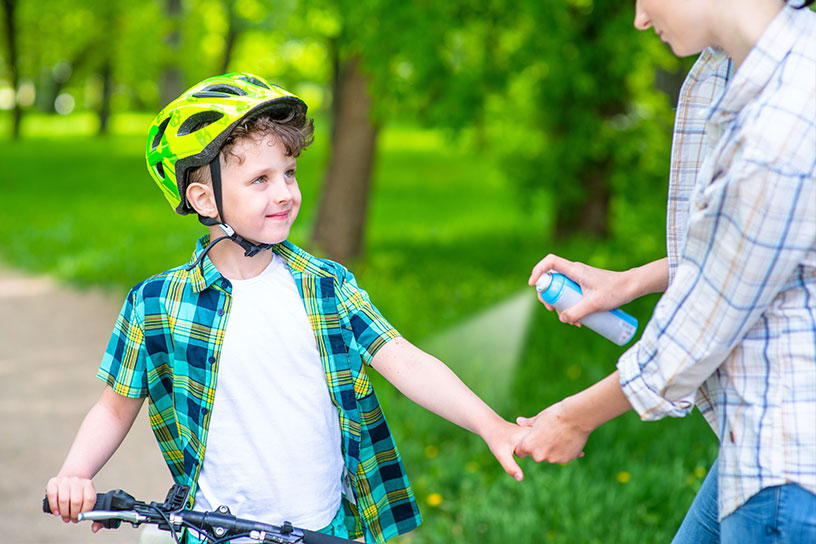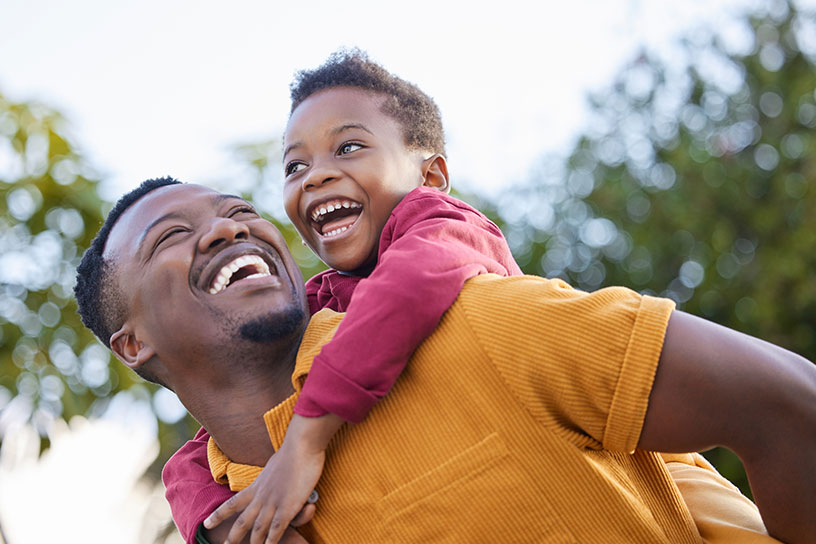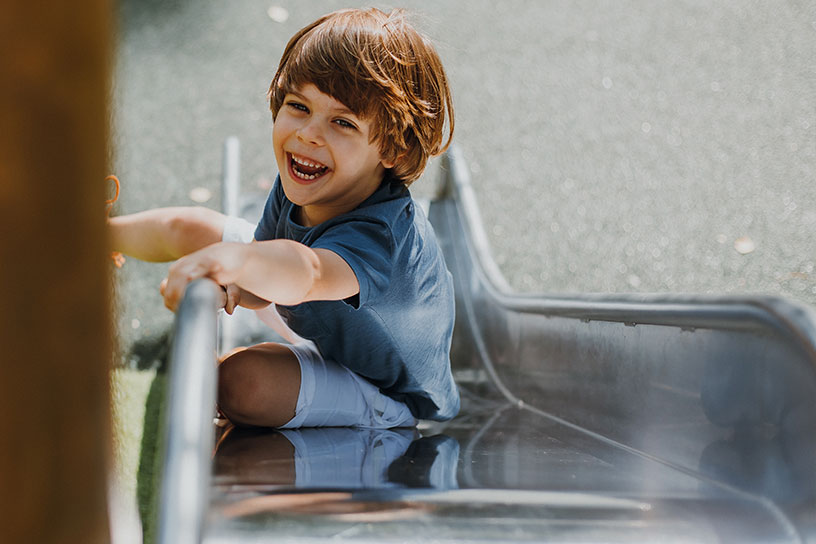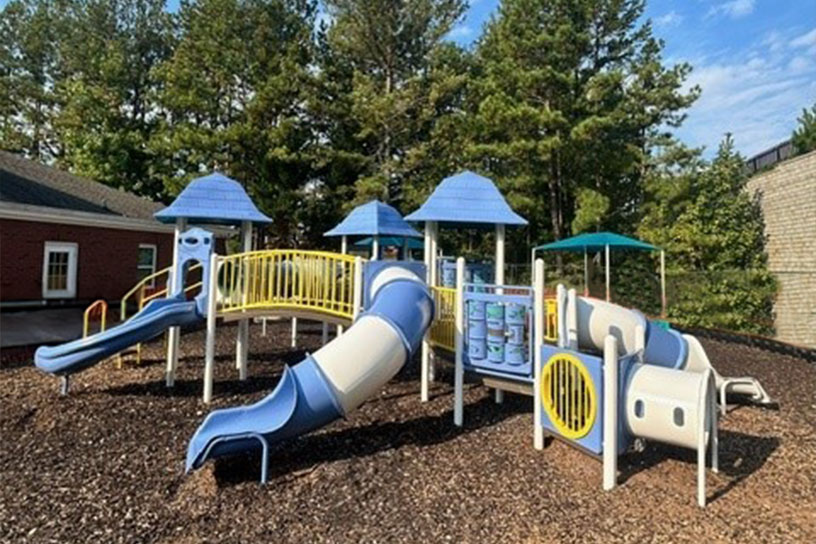Each year, thousands of children are injured while playing on playgrounds. And the truth is, insufficient playground surfacing causes many of these injuries.
The good news is that you can accurately and affordably test your playground’s surface to avoid injuries and create a safer environment for children at play. Here’s everything you need to know about playground surface testing.
What Is Playground Surface Impact Testing?
Playground surface impact testing refers to a variety of methods used to determine the safety of your playground surface. These methods simulate a child falling onto a particular surface from a variety of heights found on your playground equipment. Once the tests are complete, professionals review the data to determine injury potential and overall safety.
How is Playground Surface Testing Performed?
At Playground Guardian, we perform surface testing using the ST Impact Analyzer CH™ and Triax 2010 Safety Impact Test. Together, these processes determine how well your playground surface reduces the impact of a child's fall.
The ST Impact Analyzer CH™ mimics the size and weight of a typical six year old child's head. It uses the same specifications as crash test dummies used by car and helmet manufacturers. It is considered the most effective device on the market to test your playground surface.
Both testing devices are dropped from a variety of heights across your playground equipment. Which then provides instant data that can be used to calculate the head injury criterion (HIC) score for your surface.
Do I Need Playground Surface Impact Testing For My Playground?
Regardless of your chosen material, all playground surfaces degrade over time. Most degrade slowly, but severe weather and heavy use can cause sudden changes in your surfacing. For this reason, all playground surfaces should be regularly tested to ensure their ongoing safety.
Some of the benefits of playground surface testing with Playground Guardian include:
- Being able to track the overall condition of your surfacing and better predict repairs and replacements
- Reducing liability in case of injury on your playground equipment
- Maintaining private, confidential records of all test results
- Leveraging the knowledge of a certified playground safety inspector (CPSI)
- Feeling confident in the continued safety of children at play on your playground
Is My Playground Surface Safe?
When it comes to impact testing, every surfacing material performs differently. Each option has unique benefits and challenges that playground managers must consider carefully. Here’s what to expect from some of the most common options on the market when it comes to playground surface testing.
Loose-Fill Playground Surfaces
Loose-fill playground surfaces like EWF and rubber are generally safe and cost-effective options that absorb shock well. However, loose-fill surfaces degrade, erode, and displace over time, especially in high-traffic and frequent-impact areas under swings and slides. Ongoing maintenance will ensure the proper impact protection of a loose-fill playground surface.
Engineered Wood Fiber
Engineered wood fiber is an affordable, attractive and biodegradable playground surfacing solution. However, it’s important to know the source of your EWF to ensure the absence of chemicals and other hazards.
Rake and fluff your EWF regularly to ensure there are no loose hazards like nails or glass. Top off your surface over time (likely each year) to maintain appropriate minimum depths. Regular playground surface testing will ensure that your surfacing remains safe even through hazardous weather and heavy use.
Loose-Fill Rubber
Loose-fill rubber is another impact-absorbing material for playgrounds that also offers recyclable options and a slower degradation process than EWF. It comes in a variety of colors. Much like the other loose-fill options it displaces easily especially in high traffic areas. You will need to test and measure it regularly to ensure appropriate depths.
Traditional Wood Mulch
While wood mulch is commonly used on playgrounds across the country, it does not pass impact tests and is NOT a suitable playground safety surface. We suggest upgrading to EWF (engineered wood fiber) or another surface option as soon as possible.
Unitary Playground Surfaces
Unitary surfaces include bonded, poured, tiled rubber and turf. We recommend professional installation of all surfaces for insurance, warranty, and safety purposes. Here’s what you need to know about the safety ratings of each surface option.
Bonded Rubber
Bonded rubber naturally provides excellent shock absorption and uniform impact resistance, making it a great choice for playground surfacing. It responds well to temperature change and is typically non-slip even when wet.
However, it can be costly to install and may not be as resilient as loose-fill surfacing. It can also harden and become compacted over time, so it does require ongoing playground surface testing to ensure it continues to meet safety requirements.
Rubber Tiles
Rubber playground tiles are another safe and affordable surfacing option. However, it’s key to ensure the tiles you select are certified by their manufacturer specifically for playground use. Using generic rubber tiles that are not not rated for relevant fall heights is dangerous and not recommended.
Rubber tiles have a relatively long lifespan, but regular playground surface impact testing can alert you to necessary repairs and prevent injuries from occurring.
Poured Rubber
Poured, pour-in-place or simply PIP rubber is a durable and customizable playground surfacing option. With professional installation, PIP rubber offers excellent impact absorption, durability, and long-term value. This type of unitary surfacing allows you to add logos, graphics and themed surfacing to your playground project.
Synthetic Turf
When installed properly with appropriate padding and infill, artificial or synthetic turf can be a safe playground surface. However, there are many types of turf and not all are safe for playground height falls. If you're considering turf, schedule preliminary impact testing before you plan your playground to ensure your surface meets requirements.
Grass/Dirt
Grass and dirt are commonly used as "default" playground surfaces. However, they are not safe and are not a compliant surfacing option. While they may be safe for children running and playing sports, they will not pass playground surface testing when it comes to falls from playground platform heights.
Why Schedule Playground Surface Testing?
A playground should be a safe place for children to run, jump and soar with a soft place to land. No matter which playground surface material you choose, ensure that it meets safety standards now and in the future.






